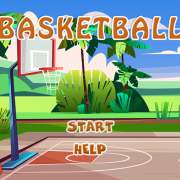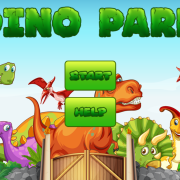Weathering and Erosion | Game Online
The Fascinating Interplay of Weathering and Erosion: Shaping Our Ever-changing Landscapes
In the grand tapestry of Earth's history, weathering and erosion stand as two indispensable threads that have molded our planet's breathtaking landscapes over eons. These natural processes, intricately intertwined, are the relentless sculptors carving the contours of continents, altering coastlines, and defining the diverse topography we marvel at today.
The Dance of Weathering
Weathering is the process by which rocks are broken down into smaller particles due to the action of various climate factors, including temperature fluctuations, precipitation, and atmospheric gases. This phenomenon occurs both on the surface (physical weathering) and within the rock itself (chemical weathering).
Physical Weathering
Physical weathering is the mechanical breaking apart of rocks due to external forces such as freeze-thaw cycles, temperature changes, or the impact of wind, water, and ice. This process splits and fractures rocks along weak points, setting the stage for further disintegration.
Chemical Weathering
Chemical weathering breaks down rocks by altering their chemical composition through reactions with atmospheric gases or water. Acid rain, carbon dioxide, and oxygen are among the common agents responsible for this type of weathering. The breakdown products of these reactions gradually weaken the rock, eventually leading to its crumbling.
Erosion: The Movement of Weathered Materials
Erosion is the movement of weathered particles from one location to another. These particles can be transported by water, wind, or ice and deposit in new locations, contributing to the formation of new landforms.
Water Erosion
Water erosion occurs when running water carries away smaller particles from a surface. This process can be further divided into two types: splash erosion and sheet erosion. Splash erosion involves the movement of particles by raindrops, while sheet erosion occurs over large, unvegetated surfaces.
Wind Erosion
Wind erosion is the transport of particles by wind. Sandstorms, dust devils, and loess deposits are examples of wind erosion in action. This process contributes to the formation of desert landscapes and can also lead to soil degradation in areas with sparse vegetation.
Glacial Erosion
Glacial erosion is a form of erosion caused by the movement of glaciers over land surfaces. This process involves plucking and abrasion, where ice fragments remove rock particles as it flows along. The slow but relentless movement of glaciers carves valleys and creates distinctive U-shaped cross sections.
The Impact of Weathering and Erosion on Our Planet
The combined forces of weathering and erosion have shaped our planet's landscapes, creating breathtaking vistas and diverse ecosystems. They also play crucial roles in nutrient cycling and soil formation, supporting life as we know it. However, these processes can also lead to negative consequences such as soil degradation, landslides, and floods.
In understanding the intricate dance between weathering and erosion, we gain a deeper appreciation for the dynamic interplay that has sculpted our world over time. As stewards of this magnificent planet, recognizing these processes allows us to better comprehend and mitigate the impacts of human activities on Earth's ever-changing landscapes.










